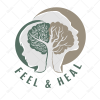How to Recognize an Inner Child Reaction
Inner Child. Have you ever found yourself responding to a situation with emotions that seem disproportionate to what’s actually happening? Perhaps a minor criticism triggers intense shame, a slight delay in response from someone you care about creates overwhelming anxiety, or a simple boundary request sparks unexplained rage. Maybe you’ve noticed yourself reacting with a level of fear, hurt, or defensiveness that
your rational mind recognizes as excessive yet feels utterly compelling in the moment. If these experiences sound familiar, you’re likely encountering what therapists call an “inner child reaction”—a present-day response that originates not from your adult perspective but from younger, more vulnerable parts of yourself that hold unresolved experiences from earlier developmental stages.
These reactions aren’t simply emotional sensitivity or overreaction. They typically emerge when current situations resemble or symbolically trigger earlier experiences where you felt similarly vulnerable, unprotected, or overwhelmed—particularly during developmental periods where you lacked the resources, support, or maturity to fully process what was happening. When your present circumstances include elements that pattern-match with these earlier experiences, these younger aspects of your psyche activate, bringing with them the emotional responses, beliefs, and protective strategies that made sense during those original situations but may not fit your current reality or capabilities as an adult.
Your body provides clear signals when these younger parts activate. You might notice sudden shifts in your physical experience—perhaps feeling smaller, more vulnerable, or less embodied than moments before. Your voice might change in quality, volume, or articulation, reflecting the younger emotional state that’s emerged. You may find yourself using language or expressing needs in ways that feel younger than your typical adult communication, or notice your posture, facial expressions, or gestures shifting to reflect earlier developmental patterns. These somatic changes aren’t metaphorical but literal manifestations of how these younger self-states live in your body, activating in full psychobiological detail when triggered by present circumstances.
What makes these reactions particularly challenging is how they create a kind of emotional time travel that happens largely outside conscious awareness. You don’t typically think, “I’m now experiencing this situation from the perspective of my eight-year-old self.” Instead, the younger emotional state simply becomes your reality—complete with the perceptions, interpretations, and response options that were available during that developmental period. This unconscious activation creates significant confusion, as your reaction makes perfect sense given the emotional reality you’re experiencing but appears disproportionate to others (or even to your own adult perspective) who aren’t perceiving through the lens of your triggered younger part.
These inner child reactions often emerge most powerfully in your closest relationships—particularly with romantic partners, family members, close friends, or authority figures. These intimate connections naturally activate attachment systems and power dynamics similar to those from your early life, creating more opportunities for pattern-matching with formative experiences. Additionally, the emotional safety of these relationships may allow vulnerable younger parts to emerge that remain carefully protected in less secure contexts, creating a painful irony where your closest connections sometimes bear the brunt of your most challenging reactions precisely because they feel safe enough for vulnerability.
Healing Exercise #1: The Inner Child Reaction Mapping
Begin developing awareness of your specific inner child reactions through intentional tracking: For two weeks, notice and document instances where your emotional response seems disproportionate to the current situation. For each reaction, explore: What specifically triggered this response? What emotions emerged most strongly? How old did these feelings seem—what developmental stage do they connect with? What physical sensations accompanied the reaction? What did you need in that moment? This detailed mapping helps identify the particular younger parts that activate in your current life and the specific triggers that awaken them, creating clarity about patterns that often operate outside conscious recognition.
Healing Exercise #2: The Dialogue with Younger Parts Practice
Developing direct communication with younger aspects of yourself helps transform unconscious reactions into conscious relationship. When you notice an inner child reaction either during or after it occurs, try this approach: Find a quiet space where you won’t be disturbed. Close your eyes and imagine the younger version of yourself that’s been activated, seeing them at the specific age that feels relevant to this reaction. Ask this younger self: “What are you feeling right now? What do you need? What are you afraid might happen?” Then, from your compassionate adult perspective, respond to these needs and fears: “I understand why you feel this way. That makes sense given what you experienced. I’m here with you now, and things are different because…” This dialogue helps create internal communication between triggered younger parts and your mature adult self, gradually integrating these aspects rather than having them unconsciously hijack your current responses.
Healing Exercise #3: The Somatic Soothing Practice
Inner child reactions include powerful physical components that respond well to body-based interventions. When you notice a younger part activating, try this somatic approach: Place one hand on your heart and one on your belly, physically connecting with your center. Take several slow, deep breaths, feeling your adult body and its capacity and strength. Mentally or verbally say to the younger part: “I feel you in here, and I’m here with you now. My adult body and resources are here to support and protect you.” Notice any shifts in physical sensation as this younger aspect receives this reassurance and connection with your mature embodied presence. This practice helps younger parts recognize they’re no longer alone with overwhelming feelings but now exist within an adult system capable of providing the regulation and protection that may have been absent during original experiences.
Healing inner child reactions involves understanding the fundamental difference between regression and integration. When younger parts activate without awareness, they can temporarily take over your entire system, creating genuine regression where your perceptions, emotions, and behavioral options reflect an earlier developmental stage rather than your full adult capacity. The goal isn’t to eliminate these younger aspects but to develop conscious relationship with them—creating internal communication that allows these parts to be acknowledged and tended without giving them complete control of your response system. This integration honors both the legitimate needs and feelings of your younger aspects and the greater resources and perspective of your adult self.
Your relationships play a crucial role in this healing, though in ways that might initially feel vulnerable. Consider sharing insights about these patterns with trusted others, perhaps saying something like: “I’ve realized that when X happens, it sometimes triggers younger parts of me that react from old experiences rather than current reality. If you notice me seeming unusually defensive/anxious/angry in these situations, it might help to know this isn’t really about you but about something being activated from my earlier life.” This transparency helps create external support for your internal integration while preventing unnecessary relationship damage from reactions that others might otherwise take personally.
The timeline for healing these patterns deserves particular patience and compassion. Many inner child reactions connect to experiences from developmental periods where you lacked the cognitive, emotional, or social resources to fully process what was happening. These unintegrated experiences don’t resolve through simple intellectual understanding but require consistent, compassionate relationship with these younger aspects over time. Each time you recognize an inner child reaction and respond with presence rather than either identification or rejection, you’re helping these younger parts gradually update their reality—recognizing that while their feelings and needs are valid, the threatening circumstances that created their protective responses are no longer your current reality.
Remember that healing inner child reactions happens through consistent practice and self-compassion, not perfect prevention of these responses. Your younger parts emerge for important reasons—bringing attention to legitimate unmet needs, revealing where healing is still needed, and offering opportunities to provide the understanding and care that may have been missing during important developmental periods. Each time you notice these aspects activating and bring conscious awareness to the process, you’re transforming what were once unconscious emotional hijackings into opportunities for greater internal integration and more choiceful adult response to current circumstances.
Keywords: Inner Child, polyvagal theory, gestalt therapy, psychotherapy, parents, parental trauma, somatic experiencing
Contact us: Feel and Heal Therapy Office










